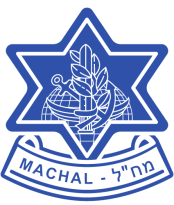In the spring of 1948, probably during March, I applied to the “Land and Labor for Palestine” Organization. Subsequently, in April, we spent a day doing a form of training at a Habonim Camp near Poughkeepsie, New York.
I met with Teddy Kollek at the Hotel 14 and he approved my future service in Israel’s War of Independence. A ticket was arranged for me and others to sail through Rosen Tours on the “Marine Carp,” departing New York on the 4th May 1948. We were scheduled to arrive in Haifa around the 18th May 1948, with a visa for Palestine from the British Authorities in my passport.
Unfortunately, the peacetime route of the “Marine Carp” was Athens, Beirut, and then Haifa. Thus, we arrived in Beirut a few days after Lebanon had initiated war with Israel on the 15th May. As a result, at the advice of the American Consul in Beirut, all males between 18 and 50 years of age were instructed by the Lebanese Authorities to disembark in Beirut. We were driven by truck to an internment building in Baalbek, Lebanon, where we were held captive for six weeks. By then the “Marine Carp” had returned to Beirut on its subsequent voyage. We were placed aboard the “Marine Carp” which again sailed from Beirut, skipping Haifa, to Alexandria and Palermo, before proceeding to its return destination of New York.
I asked to see a dentist in Palermo and left the “Marine Carp.” I then continued to Naples and Rome with nine others of the passengers who had been interned in Baalbek. In Rome we met with a representative of the Haganah. He arranged a ‘laissez passer’ for me since my passport had been kept on the “Marine Carp.” Accordingly, I flew from Rome around the 10th July, landing at an airport near Haifa. The next day I was driven from Haifa to Tel Litwinsky, where I was inducted into the IDF.
These dates in the second week of July were the period of the first truce, and of the ten days of warfare in the 1948 Israel War of Independence. A few days later we were moved to the army base at Nesher, where we became members of the 72nd Infantry Battalion in the IDF’s 7th Brigade. I served in this battalion from about the 13th July 1948 until Passover 1949.
While in the 72nd, in addition to the usual infantry training, I had also trained to be a signaler/wireless operator, as I was fluent in Hebrew, Yiddish, English and French.
On the night of 23rd October I was the signaler with “B” Company during the proposed raid on a headquarters of the Arab Liberation Army (ALA). It was during the second, lengthy truce period and it was essential to return to Kibbutz Eilon before dawn. At midnight, Captain Shutzman, Commanding Officer of “B” Company, realized we would not make the return as planned, and so he was ordered to open fire with everything we had in the direction of the ALA’s headquarters. On the march back to Eilon, South African Lou Hack was wounded and was taken back to Eilon. Sadly, in the ambulance from Eilon to Nahariya, he died from his wounds.
At the end of October I was a signaler with the 72nd for the duration of the short four-day “Operation Hiram,” moving from Safed, Meron, Sifsufa, Jish, Sasa, Baram and Malkiya on the Lebanese border. After the conclusion of “Operation Hiram” we returned to our camp in Samaria, and then moved to St. Lukes outside Haifa. From there, in December, the entire 72nd Battalion moved to the Syrian front. I was stationed mostly at Machanayim until we all returned to St. Lukes.
With the signing of the Armistice Agreement around Passover 1949, I requested and received my discharge from the army.
Source: David Sidorsky, November 2013

